The Allure of Zhengjue Si: Experience the Peaceful Beauty of an Ancient Monastery
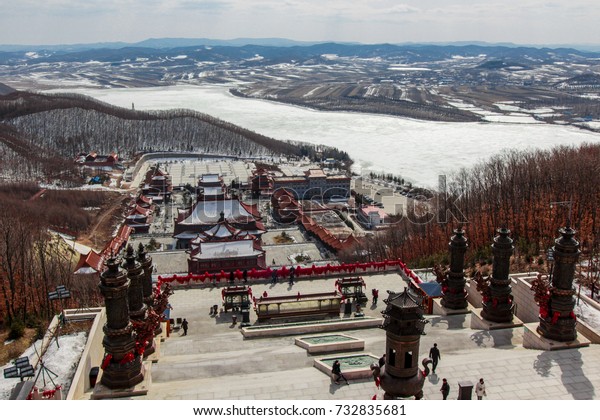
An Essential Guide to Visiting Zhengjue Si
In This Guide
- An Essential Guide to Visiting Zhengjue Si
- The Rich History and Legends of Zhengjue Si
- Main Highlights: What You Absolutely Can’t Miss
- Planning Your Visit: A Practical Guide
- Tickets: Prices, Booking, and Tips
- How to Get There: A Complete Transportation Guide
- Local Cuisine and Accommodation Nearby
- Frequently Asked Questions
- Final Thoughts on Your Trip
Nestled within the bustling Haidian District of Beijing, Zhengjue Si (正觉寺), or the Temple of Great Righteous Awakening, stands as a serene testament to China’s rich Buddhist heritage. Built in 1473 during the Ming Dynasty, this temple enchants visitors with its intricate architecture and profound spiritual ambiance. As you approach, the sight of its five majestic pagodas—each adorned with exquisite Buddhist carvings—invites you into a world where history and spirituality intertwine seamlessly.
Zhengjue Si is not just a place of worship; it is a sanctuary where the vibrant colors of autumn foliage create an enchanting backdrop, particularly the golden hues of the ginkgo trees that surround the temple grounds. This natural beauty, combined with the meticulously preserved stone carvings, offers a unique glimpse into the artistic mastery of the era.

Zhengjue Si.
For international travelers seeking to delve into Chinese history and culture, a visit to Zhengjue Si provides an enriching experience. Here, you can immerse yourself in the tranquility of Buddhist practices, reflect on the teachings of the past, and witness the harmonious blend of nature and architecture. Whether you’re an avid historian, a spiritual seeker, or simply a curious traveler, Zhengjue Si promises to leave an indelible mark on your journey through China.
Prepare to explore this hidden gem, where every corner whispers stories of devotion and artistry, and every moment spent in its embrace is a step closer to understanding the profound depths of Chinese culture.
The Rich History and Legends of Zhengjue Si
Journey Through Time: The History and Legends of Zhengjue Si
Nestled in the Haidian District of Beijing, Zhengjue Si (正觉寺), also known as the Temple of the Great Righteous Awakening, offers visitors not just a serene retreat from the city’s hustle but also a deep dive into China’s rich cultural and historical tapestry. This Buddhist temple, established during the Ming Dynasty in 1473, stands as a testament to spiritual dedication and architectural beauty.
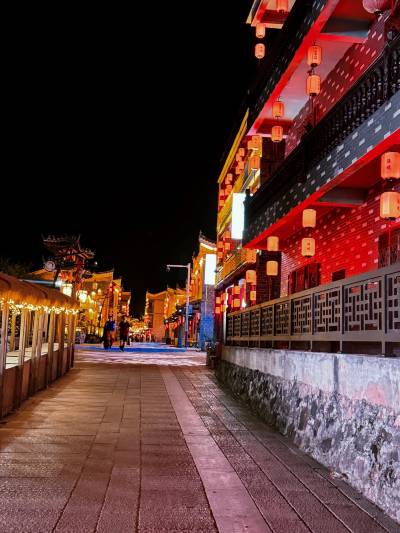
Zhengjue Si.
Historical Significance
-
Foundation in the Ming Dynasty: Zhengjue Si was built under the auspices of the Ming Dynasty, a period renowned for its cultural advancements and architectural achievements. The temple showcases the era’s distinctive aesthetic, particularly through its intricate carvings and the formation of its five pagodas, which symbolize the five elements and the path to enlightenment.
-
Buddhist Artistry: The temple’s stone walls are adorned with exquisite Buddhist carvings that narrate tales of the Buddha’s teachings and significant events in Buddhist history. These artistic elements not only serve a decorative purpose but also act as educational tools for visitors looking to understand Buddhist philosophy.
-
Cultural Hub: Over the centuries, Zhengjue Si has played a pivotal role as a cultural hub, attracting monks, scholars, and devotees. Its tranquility and spiritual ambiance have made it a favored place for meditation and reflection, echoing the timeless pursuit of enlightenment.
Legends Surrounding Zhengjue Si
The temple is steeped in legends that add to its mystique and allure:

Zhengjue Si.
-
The Legend of the Enlightened Monk: One of the most famous legends associated with Zhengjue Si speaks of a revered monk who, after years of meditation, achieved enlightenment within the temple’s sacred halls. It is said that during his meditative state, the monk received divine visions that guided the temple’s architectural design and the placement of its pagodas. This tale highlights the temple as a sanctuary not only for physical worship but also for spiritual awakening.
-
The Autumn Ginkgo Trees: Every autumn, the temple is enveloped in a golden hue as ginkgo trees shed their leaves. Local lore suggests that the ginkgo trees were planted by the monk himself as a symbol of endurance and longevity. Visitors often flock to the temple during this season to witness the breathtaking scenery, which is said to enhance the temple’s spiritual energy.
-
Whispers of the Past: Ghostly tales occasionally surface, recounting the experiences of those who claim to have felt the presence of the enlightened monk during their visits. These stories, while anecdotal, add a layer of intrigue and engagement for those seeking a deeper connection with the temple’s history.
A Living Legacy
Today, Zhengjue Si remains a vibrant part of Beijing’s spiritual landscape. Visitors are invited to explore its serene grounds, participate in meditation sessions, and immerse themselves in the tranquil atmosphere that has inspired countless souls over centuries. Each stone, carving, and pagoda tells a story, making this temple a crucial stop for anyone wishing to delve into the historical and cultural richness of China.
Whether you come for spiritual enlightenment, artistic appreciation, or simply to enjoy a peaceful moment amidst history, Zhengjue Si offers an unforgettable experience rooted in the profound traditions of Chinese Buddhism.

Zhengjue Si.
Main Highlights: What You Absolutely Can’t Miss
Discovering the Splendor of Zhengjue Si (正觉寺)
Zhengjue Si, also known as the Temple of Great Righteous Awakening, is a must-visit destination for those traversing the rich tapestry of Beijing’s historical and cultural landscape. This Ming Dynasty temple, constructed in 1473, invites travelers to explore its serene beauty and intricate artistry. Here are the main highlights that you absolutely cannot miss during your visit.
1. Architectural Marvels
- Five Pagodas: The temple is renowned for its distinctive five pagodas, each showcasing traditional Chinese architectural design. Their elegant lines and intricate details reflect the artistry of the Ming Dynasty, making them a perfect subject for photography enthusiasts.
- Buddhist Carvings: As you wander through the temple grounds, take a moment to admire the exquisite Buddhist carvings that adorn its stone walls. These ancient artworks tell stories of devotion and spirituality, providing insight into the religious practices of the era.
2. Seasonal Beauty
- Autumn Foliage: If you visit during autumn, prepare to be enchanted by the vibrant colors of the ginkgo trees that line the temple grounds. The golden leaves create a stunning backdrop against the temple’s architecture, making it an ideal spot for leisurely walks and contemplative moments.
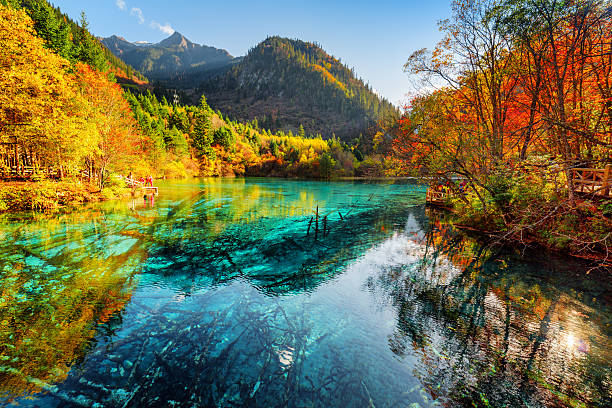
Zhengjue Si.
3. Cultural Significance
- Historical Context: Zhengjue Si is not just a temple; it is a testament to the religious and cultural evolution of China. Built during a time of great artistic and philosophical development, it serves as a reminder of the enduring influence of Buddhism in Chinese society.
- Spiritual Experience: Visitors often find the temple to be a place of tranquility and reflection. Whether you’re a follower of Buddhism or simply seeking a peaceful retreat, the ambiance here encourages introspection and connection.
4. Accessibility and Surroundings
- Location: Situated just a short walk from the National Library and other major attractions in Beijing, Zhengjue Si is conveniently located for those looking to explore the city’s rich history.
- Nearby Attractions: Combine your visit with trips to nearby sites such as the Beijing Zoo, the Summer Palace, or the iconic Forbidden City to create a comprehensive cultural itinerary.
5. Practical Information
- Visiting Hours: Zhengjue Si is open daily from 9:07 AM to 4:33 PM, making it easy to fit into your travel schedule.
- Admission: There is typically no admission fee, allowing visitors to appreciate the temple’s beauty without financial barriers.

Zhengjue Si.
Conclusion
A visit to Zhengjue Si is an enriching experience that promises to immerse you in the depths of Chinese history and culture. From its stunning architectural features to its peaceful ambiance, this temple is truly a gem within Beijing’s bustling metropolis. Don’t miss the chance to witness its beauty and reflect on the powerful heritage it represents.
Planning Your Visit: A Practical Guide
Discovering Zhengjue Si: Your Essential Guide
Nestled in the vibrant Haidian District of Beijing, Zhengjue Si, or the Temple of the Great Righteous Awakening, is a captivating destination for anyone interested in Chinese history and culture. This Ming Dynasty temple, established in 1473, features stunning architecture and intricate carvings that transport visitors back in time. Below, you will find essential information for planning your visit to this serene and historically rich site.
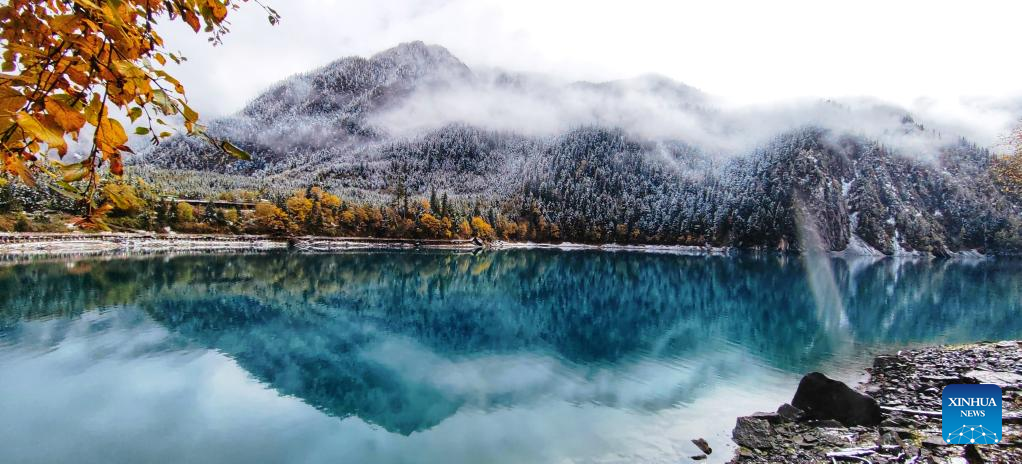
Zhengjue Si.
Getting There
Address:
No.24 Wutasi Village, Haidian District, Beijing 100081, China
Public Transport:
– Subway: The nearest subway station is the National Library (Line 4). From there, it’s an 8-minute walk to the temple.
– Bus: Various buses serve the Haidian area; check local schedules for the most convenient routes.
Walking Directions:
Upon exiting the subway, head southeast on Zhongguancun Street, then turn left on Wutasi Road. Follow the signs towards Zhengjue Si.
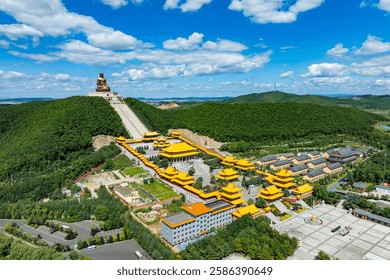
Zhengjue Si.
Opening Hours
- Daily: 9:07 AM – 4:33 PM
- Closed: Major public holidays may affect operating hours; please verify before your visit.
Admission Fees
Entry to Zhengjue Si is generally free, but donations for temple maintenance are appreciated. Special events or exhibitions may have separate fees, so check in advance.
What to Expect
As you approach the temple, you will be greeted by five distinct pagodas, a hallmark of the Zhengjue Si’s architectural allure. The temple’s stone walls are adorned with exquisite Buddhist carvings that reflect the artistry of the Ming Dynasty.

Zhengjue Si.
Best Times to Visit:
– Autumn: The vibrant ginkgo trees surrounding the temple create a picturesque backdrop.
– Weekdays: To enjoy a quieter experience, consider visiting on weekdays when the crowds are thinner.
Nearby Attractions
Zhengjue Si is conveniently located near several other notable sites:
– Beijing Zoo: A short walk away, home to giant pandas and diverse wildlife.
– Summer Palace (Yiheyuan): Just a 15-minute drive, this UNESCO World Heritage site features stunning gardens and historic palaces.
– Forbidden City: A must-see for any visitor to Beijing, located approximately 4.5 kilometers away.
Dining Options
After exploring the temple, indulge in some local cuisine at nearby restaurants:
– Xiang Bin Restaurant: Known for its authentic Chinese dishes, just a 0.3-mile walk from the temple.
– Dayali Roast Duck: Famous for its Peking duck, located about 0.4 miles away.
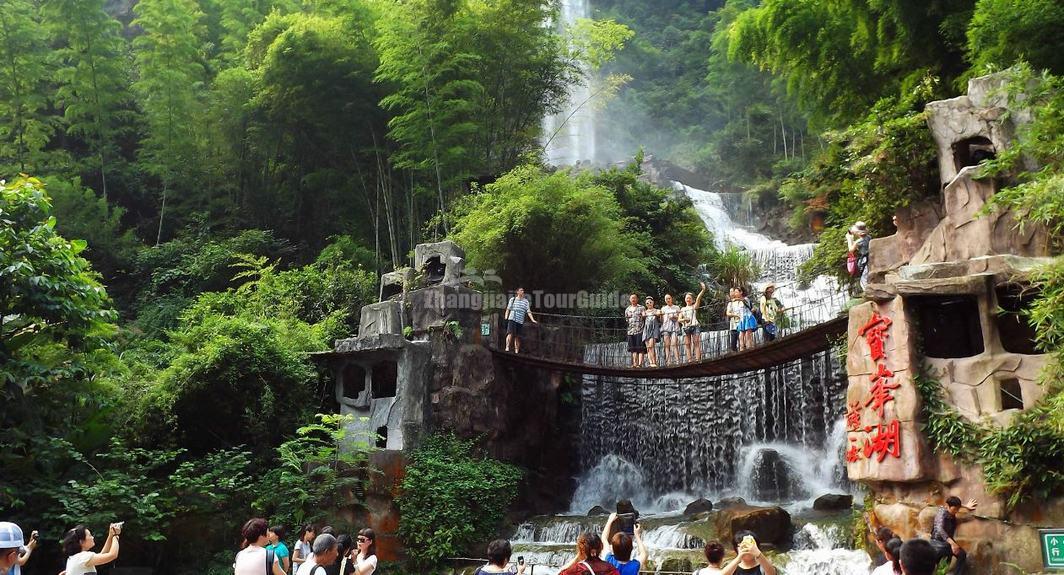
Zhengjue Si.
Tips for Your Visit
- Dress Respectfully: As a place of worship, it’s important to dress modestly. Comfortable shoes are recommended, as you may do a fair amount of walking.
- Photography: Be mindful of the temple’s rules regarding photography, especially during ceremonies.
- Engage with Locals: Many visitors find it rewarding to chat with local monks or temple staff to gain deeper insights into the temple’s history and significance.
Final Thoughts
Visiting Zhengjue Si offers a unique glimpse into China’s rich cultural heritage. Whether you’re a history buff, a photography enthusiast, or simply seeking a peaceful retreat from the bustling city, this temple promises a memorable experience. Embrace the tranquility, appreciate the artistry, and leave with a sense of connection to the spiritual and historical roots of China.
Tickets: Prices, Booking, and Tips
When planning a visit to Zhengjue Si (正觉寺), also known as the Temple of the Great Righteous Awakening, it’s essential to be well-informed about ticket prices, booking options, and some handy tips to enhance your experience.
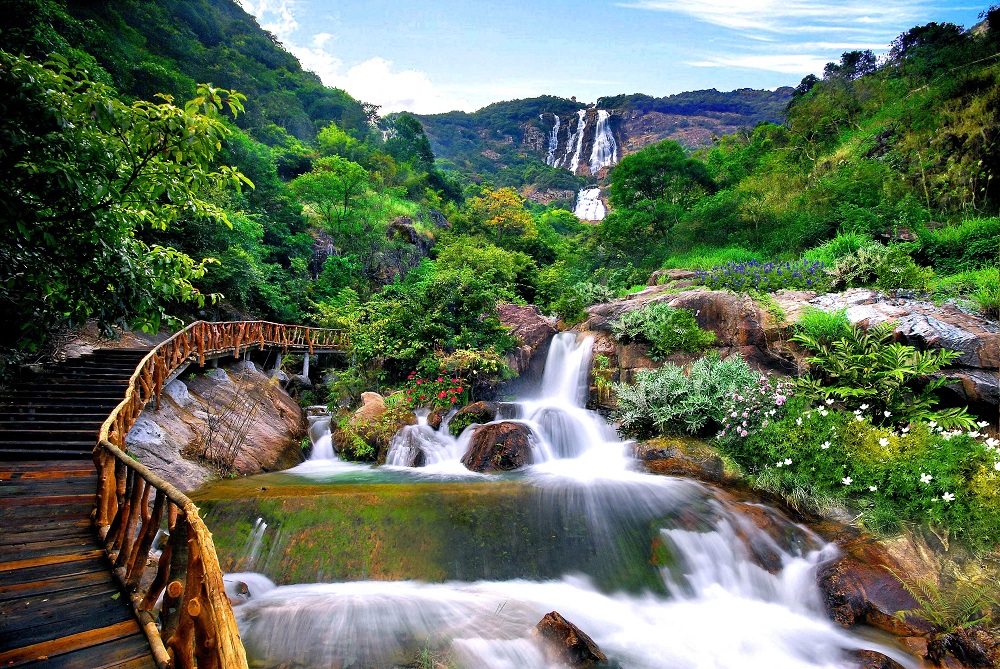
Zhengjue Si.
Ticket Prices
Visiting Zhengjue Si is generally budget-friendly, with ticket prices typically ranging around CNY 10 (approximately $1.50 USD). This nominal fee grants you access to the temple’s serene atmosphere and stunning architecture, including its five historical pagodas and intricate stone carvings.
Booking Information
While walk-in visits are quite common, especially during weekdays, it’s advisable to plan ahead during peak tourist seasons or weekends. Here’s how you can manage your booking:
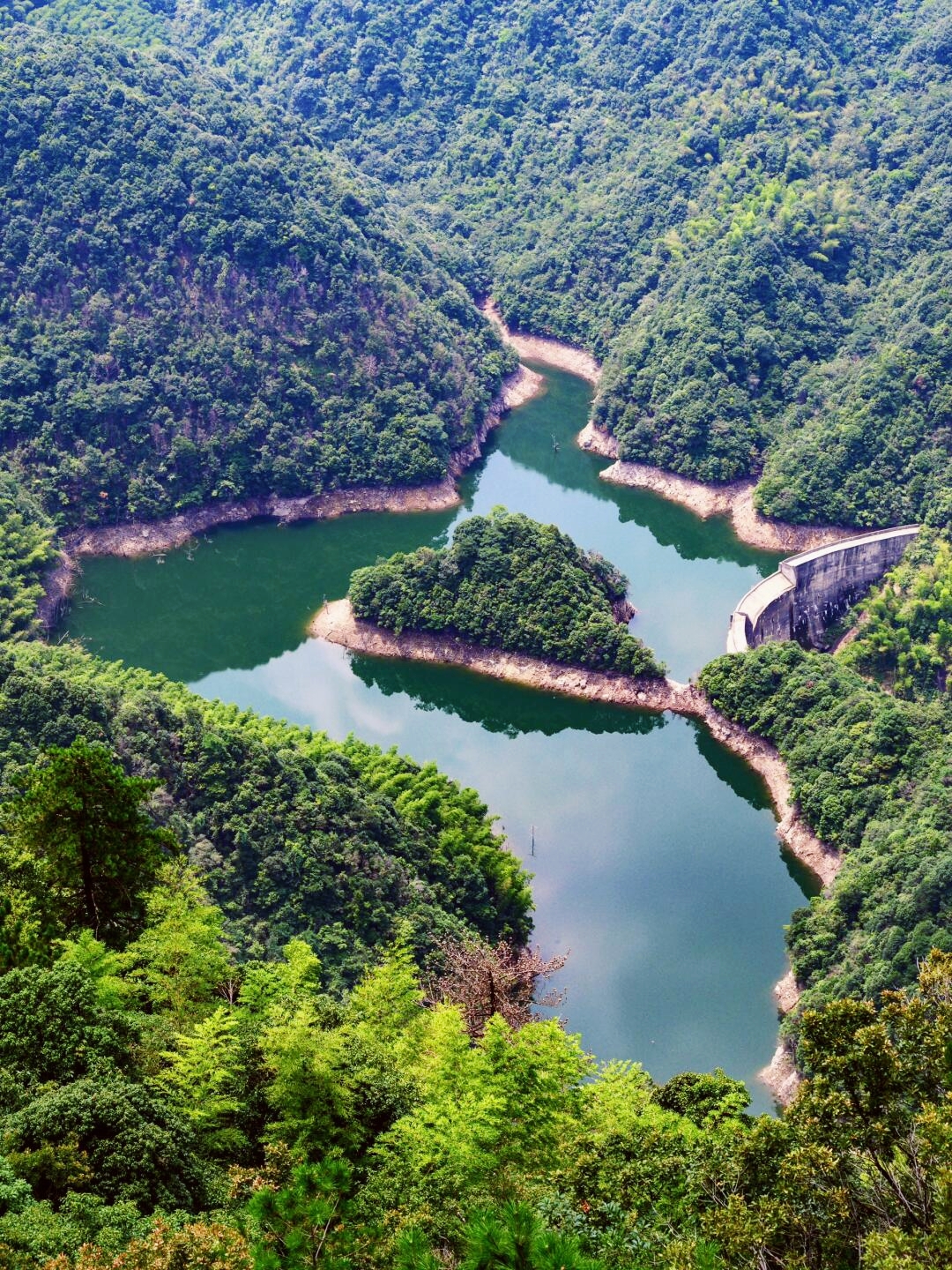
Zhengjue Si.
- Walk-in Tickets: Available directly at the temple entrance.
- Online Reservations: For groups or special events, consider contacting the temple in advance via their official contact methods to secure your entry.
Opening Hours
Zhengjue Si welcomes visitors every day from 9:00 AM to 4:30 PM. Arriving early can help avoid crowds and allow you to fully immerse yourself in the temple’s tranquil environment.
Tips for a Memorable Visit
- Best Time to Visit: Autumn is particularly beautiful, with vibrant ginkgo leaves creating a stunning backdrop against the temple’s ancient structures.
- Respectful Attire: As this is a religious site, dressing modestly is appreciated. Ensure your shoulders and knees are covered.
- Photography: Feel free to capture the beauty of the temple, but be respectful of worshippers and avoid using flash during prayer times.
- Explore the Surroundings: The temple is located in Haidian District, near several other attractions like the Beijing Zoo and the National Library, making it a perfect stop during a day of exploration.
Getting There
Zhengjue Si is conveniently situated in the heart of Beijing, just an 8-minute walk from the National Library metro station. Public transport is efficient, but consider using ride-share apps for a more direct approach if you have heavy bags or are visiting in a group.
With its rich history dating back to the Ming Dynasty and serene ambiance, a visit to Zhengjue Si is a profound way to connect with Chinese culture and spirituality. Make sure to take your time, enjoy the surroundings, and embrace the tranquility that this temple offers.
How to Get There: A Complete Transportation Guide
Navigating Your Way to Zhengjue Si (正觉寺)
Visiting Zhengjue Si, or the Temple of the Great Righteous Awakening, offers a captivating glimpse into China’s rich Buddhist heritage. Nestled in the Haidian District of Beijing, this Ming Dynasty temple (built in 1473) is renowned for its stunning architecture and serene atmosphere. Whether you’re traveling from within Beijing or arriving from another city, here’s how to make your journey to this historical gem seamless and enjoyable.
Arriving by Air
Beijing Capital International Airport (PEK) is the main international gateway to Beijing. From the airport, you have several options to reach Zhengjue Si:
-
Airport Express Train: Take the Airport Express to Dongzhimen Station. From there, transfer to Line 2 of the Beijing Subway and head to Xizhimen Station. Finally, switch to Line 4 and alight at National Library Station, which is an 8-minute walk from the temple.
-
Taxi: Taxis are readily available outside the terminal. A direct ride to Zhengjue Si will take approximately 40-60 minutes, depending on traffic. Ensure the driver uses the meter, and be prepared to pay around 100-150 RMB.
Public Transportation Options
Once in Beijing, public transportation is an efficient way to reach the temple:
-
Subway: The most convenient route involves taking Line 4 (the blue line) and getting off at National Library Station. Upon exiting, follow the signs for Wutasi Village, which is a short 8-minute walk to Zhengjue Si.
-
Buses: Several bus lines service the area around Zhengjue Si. Consider taking Bus 718 or Bus 302. The nearest bus stop is within a short walking distance from the temple. Check local bus schedules to plan your trip effectively.
Local Transportation
If you find yourself staying in central Beijing, there are a few local transportation options to consider:
-
Bicycles: Renting a bicycle can be a delightful way to explore the city. Many bike-sharing services operate throughout Beijing, and the ride to Zhengjue Si can be both scenic and invigorating.
-
Ride-Sharing Apps: Services like Didi Chuxing offer a convenient alternative to traditional taxis. Simply input your destination, and a driver will pick you up at your location.
Tips for Your Visit
-
Timing: Zhengjue Si is open from 9:07 AM to 4:33 PM daily. To fully appreciate the temple’s beauty, consider visiting during the autumn months, when the ginkgo trees create a stunning backdrop with their golden leaves.
-
Nearby Attractions: After exploring the temple, take the time to enjoy nearby sites such as the Beijing Zoo or the National Library of China, both within walking distance.
-
Cultural Etiquette: When visiting religious sites, it’s important to be respectful. Dress modestly and maintain a quiet demeanor while enjoying the surroundings.
Conclusion
With its rich history and tranquil ambiance, Zhengjue Si is a must-visit for anyone interested in Chinese culture and Buddhism. Utilizing Beijing’s efficient transportation system will ensure that your journey to this historical temple is smooth and enjoyable. Safe travels!
Local Cuisine and Accommodation Nearby
Discovering Local Flavors and Comfortable Stays Near Zhengjue Si
When visiting Zhengjue Si (正觉寺), the Temple of the Great Righteous Awakening, immerse yourself not only in its rich history but also in the vibrant local cuisine and welcoming accommodation options that Beijing has to offer.
Savoring Local Cuisine
Beijing is renowned for its culinary diversity, and the area surrounding Zhengjue Si is no exception. Here are some must-try restaurants that showcase both traditional and contemporary Chinese flavors:
-
Xiang Bin Restaurant
Cuisine: Chinese
Rating: ★★★★★
Distance: 0.3 miles
Known for its authentic dishes and warm atmosphere, this restaurant is a local favorite. Don’t miss their signature dumplings and Peking duck, a must-try when in Beijing. -
Huatian Emei Restaurant
Cuisine: Szechuan
Rating: ★★★★☆
Distance: 0.4 miles
Experience the bold and spicy flavors characteristic of Szechuan cuisine. The mapo tofu and spicy hot pot here are particularly popular among locals and tourists alike. -
Dayali Roast Duck (DaHui Si)
Cuisine: Beijing Specialties
Rating: ★★★★☆
Distance: 0.4 miles
This establishment specializes in the iconic Peking duck, served with all the traditional accompaniments. A visit to Beijing wouldn’t be complete without indulging in this culinary masterpiece. -
Ji Tian WeiDao (DaHui Si)
Cuisine: Guizhou
Rating: ★★★★★
Distance: 0.4 miles
A hidden gem offering unique flavors from Guizhou Province. Their spicy dishes are both flavorful and aromatic, perfect for adventurous eaters. -
Cafe Cha – Shangri-La Beijing
Cuisine: International
Rating: ★★★★★
Distance: 1.2 miles
If you’re seeking a more international menu, this upscale cafe provides a delightful blend of Eastern and Western cuisines. The ambiance is perfect for a relaxed meal after a day of exploration.
Comfortable Accommodations
After a day of spiritual exploration at Zhengjue Si, retreat to one of the nearby accommodations for a restful night. Here are some excellent options:
-
Shangri-La Hotel, Beijing
Rating: ★★★★★
Distance: 1.2 miles
This luxury hotel offers a blend of traditional Chinese hospitality and modern comfort. Enjoy spacious rooms, exquisite dining options, and a serene atmosphere, all within easy reach of major attractions. -
Beijing Everbright International Hotel
Rating: ★★★★☆
Distance: 1.5 miles
A well-rated option that provides comfortable rooms and convenient amenities. Its location makes it ideal for those wishing to explore the cultural gems nearby. -
Holiday Inn Beijing Deshengmen
Rating: ★★★★
Distance: 2 miles
Perfect for families and business travelers alike, this hotel features modern decor and a range of facilities, including a fitness center and restaurant serving both local and international dishes. -
Beijing 161 Wangfujing Hotel
Rating: ★★★★☆
Distance: 2.5 miles
A boutique hotel that offers a unique blend of traditional charm and contemporary amenities. Located in the heart of Beijing, it provides easy access to shopping and dining options.
By indulging in the local cuisine and selecting comfortable accommodations, your visit to Zhengjue Si will be an enriching and memorable experience that encapsulates the essence of Beijing’s cultural heritage. Enjoy your journey through history and flavor!
Frequently Asked Questions
Frequently Asked Questions about Zhengjue Si (正觉寺)
1. What is Zhengjue Si?
Zhengjue Si, also known as the Temple of the Great Righteous Awakening, is a historic Buddhist temple located in Beijing, China. Built during the Ming Dynasty in 1473, it features stunning architecture, including five pagodas and intricate stone carvings that reflect traditional Buddhist artistry.
2. Where is Zhengjue Si located?
Zhengjue Si is situated in Haidian District, Beijing, at No.24 Wutasi Village. It is conveniently located near several major attractions, such as the National Library and the Peking Five-Pagoda Temple.
3. What are the visiting hours?
The temple is open to visitors from 9:07 AM to 4:33 PM, Tuesday to Sunday. Please note that it is closed on Mondays, so plan your visit accordingly.
4. Is there an admission fee?
There is no admission fee to visit Zhengjue Si, making it an excellent option for travelers looking to immerse themselves in Chinese culture and history without the cost.
5. What can I expect to see at Zhengjue Si?
Visitors can admire the temple’s five pagodas, intricate Buddhist carvings, and serene garden surroundings. The best time to visit is during autumn when the ginkgo trees burst into vibrant colors, enhancing the temple’s beauty.
6. How do I get to Zhengjue Si?
Zhengjue Si is easily accessible via public transportation. The closest subway station is National Library, which is about an 8-minute walk from the temple. Taxis and ride-sharing services are also widely available in the area.
7. Are there any nearby attractions?
Yes, several popular attractions are nearby, including:
– Beijing Zoo (0.6 miles)
– Summer Palace (2.8 miles)
– Forbidden City (approximately 3 miles)
– Lama Temple (2.5 miles)
These sites provide a great opportunity to explore more of Beijing’s rich history and culture.
8. Is Zhengjue Si suitable for families?
Absolutely! Zhengjue Si is a family-friendly destination. The tranquil environment allows for peaceful exploration, and children can enjoy the open spaces and unique architecture. The temple serves as an excellent educational experience about Chinese Buddhism and history for visitors of all ages.
Final Thoughts on Your Trip
As you wrap up your exploration of Zhengjue Si (正觉寺), let the echoes of its rich history and serene beauty resonate within you. This magnificent temple, dating back to the Ming Dynasty, serves not just as a site of worship but as a testament to the artistry and spirituality of its time. Here’s why your visit to Zhengjue Si is an experience that lingers long after you leave:
A Journey Through Time
- Historical Significance: Built in 1473, Zhengjue Si stands as a monument to the architectural prowess and cultural depth of the Ming era. The intricate carvings adorning its stone walls are not mere decorations; they are narratives of Buddhist teachings and Chinese artistry that have withstood the test of time.
- Serenity Amidst the Hustle: Nestled in the bustling Haidian District of Beijing, this temple provides a tranquil escape. The peaceful ambiance invites contemplation and introspection, making it a perfect sanctuary away from the frenetic pace of city life.
Natural Beauty
- Seasonal Splendor: If you are fortunate enough to visit during autumn, you will be treated to a breathtaking display of ginkgo trees, their golden leaves creating a stunning backdrop that enhances the temple’s charm. Each season at Zhengjue Si offers a new perspective, reminding you of nature’s cyclical beauty.
Cultural Insights
- Spiritual Connection: Engaging with the local monks or simply observing their daily rituals can deepen your understanding of Buddhist practices. This interaction bridges the gap between visitor and local, allowing for a shared appreciation of a profound spiritual heritage.
Final Thoughts
Your journey through Zhengjue Si is more than just a visit to a historical site; it is an immersion into the very essence of Chinese culture and spirituality. As you depart, carry with you the wisdom gleaned from ancient carvings and the tranquility of the temple grounds. Let the stories of Zhengjue Si inspire your own path, reminding you that every journey is an opportunity for enlightenment, reflection, and growth.
Embrace the memories, and may they guide you in your travels ahead.